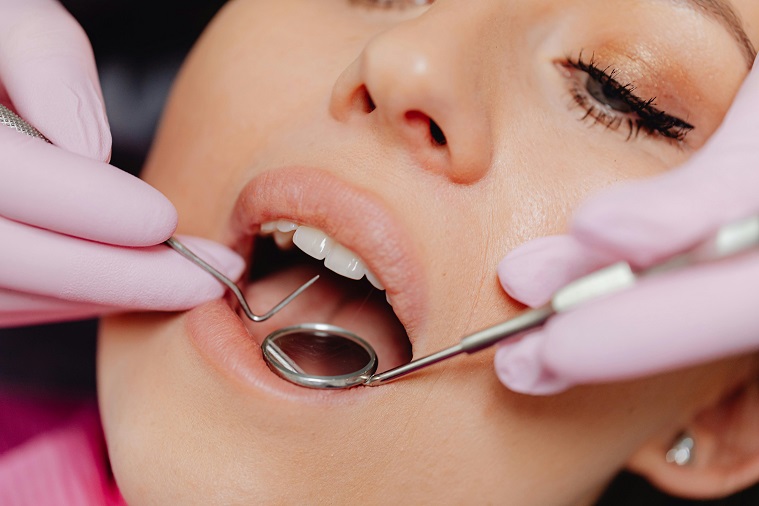Dental Whitening Treatment: Brightening Your Smile Safely and Effectively

Dental whitening treatment is a popular and effective way to brighten your smile and improve your overall appearance. Over time, teeth can become stained or discolored due to various factors such as food and drink, tobacco use, and aging. Teeth whitening treatments offer a solution to these common issues, enhancing the color and vibrancy of your smile.
This comprehensive guide will help you understand the different types of teeth whitening treatments, their benefits, potential risks, and how to maintain your results.
Types of Dental Whitening Treatments
Dental whitening treatment is a popular cosmetic procedure designed to enhance the brightness of your smile by removing stains and discoloration from your teeth. Over time, factors such as food and drink consumption, smoking, and aging can cause teeth to lose their natural whiteness.
Whitening treatments offer an effective solution to these issues, providing a more vibrant and youthful appearance. Whether performed in-office by a dental professional, through customized at-home kits, or with over-the-counter products, dental whitening can significantly boost your confidence and improve your overall aesthetic.
In-Office Whitening
In-office whitening is a professional treatment performed by a dentist. It involves applying a high-concentration bleaching gel to your teeth. This process can produce significant results in just one visit, often lightening teeth by several shades.
- Procedure: The dentist applies a protective barrier to your gums before applying the bleaching gel. A special light or laser may be used to enhance the effectiveness of the gel.
- Duration: Typically takes about 60 to 90 minutes.
- Results: Immediate and noticeable.
At-Home Whitening Kits
At-home whitening kits provided by dentists offer a professional-grade solution for home use. These kits usually include custom-made trays and a bleaching gel.
- Procedure: Custom trays are filled with bleaching gel and worn for a specified period, usually a few hours each day or overnight for several weeks.
- Duration: Results are typically seen within a few days to a couple of weeks.
- Results: Effective, though generally less dramatic than in-office treatments.
Over-the-Counter Whitening Products
Over-the-counter (OTC) products are available without a prescription and include options such as whitening strips, gels, and toothpaste.
- Procedure: Products are applied as directed, often daily, for a period ranging from a few days to a couple of weeks.
- Duration: Varies by product and usage.
- Results: Less potent than professional treatments, but can still be effective for mild to moderate discoloration.
Benefits of Dental Whitening
- Improved Appearance: A brighter smile can enhance your overall look, making you feel more attractive and confident.
- Boosted Confidence: Whiter teeth can boost your self-esteem, encouraging you to smile more freely.
- Non-Invasive: Whitening treatments are generally non-invasive and painless.
Potential Risks and Considerations
- Tooth Sensitivity: Some people experience increased tooth sensitivity during or after whitening treatments. This is usually temporary.
- Gum Irritation: Whitening agents can sometimes cause irritation to the gums if they come into contact. Dentists take precautions to protect your gums during in-office treatments.
- Not Permanent: Whitening is not a permanent solution. The effects can last from a few months to a couple of years, depending on your oral hygiene and lifestyle habits.
Maintaining Your Whitened Smile
- Good Oral Hygiene: Brush and floss regularly to maintain the brightness of your teeth.
- Avoid Staining Foods and Drinks: Limit consumption of coffee, tea, red wine, and foods that can stain your teeth.
- Use a Straw: When drinking beverages that can stain your teeth, use a straw to minimize contact with your teeth.
- Regular Dental Check-Ups: Regular visits to the dentist for cleanings and check-ups can help maintain your whitening results.
Factors to Consider When Choosing a Whitening Treatment
1. Desired Results
Consider how quickly you want to see results and how white you want your teeth to become. Professional treatments offer the fastest and most dramatic results, while OTC products and natural remedies may provide more gradual changes.
2. Budget
Your budget will significantly impact your choice of whitening treatment. In-office treatments are the most expensive, followed by professional take-home kits, OTC products, and natural remedies. Determine how much you are willing to spend on achieving your desired level of whiteness.
3. Tooth Sensitivity
If you have sensitive teeth, you may want to opt for treatments that are gentler on your enamel. Consult with your dentist to discuss options that minimize sensitivity, such as lower-concentration bleaching agents or desensitizing toothpaste.
4. Oral Health
Before beginning any whitening treatment, it’s essential to ensure your teeth and gums are healthy. Whitening treatments can exacerbate existing dental issues, so it’s best to address any cavities, gum disease, or other oral health problems first. A dentist can assess your oral health and recommend the most suitable whitening options.
5. Convenience and Lifestyle
Consider how much time you can dedicate to whitening your teeth. In-office treatments offer quick results but require scheduling an appointment. Take-home kits and OTC products allow for more flexibility but may take longer to see results. Choose a treatment that fits your lifestyle and time constraints.
Conclusion
Dental whitening treatments offer a safe and effective way to enhance your smile and boost your confidence. Whether you choose an in-office procedure, an at-home kit, or an over-the-counter product, understanding the process and maintaining good oral hygiene can help you achieve and maintain a bright, beautiful smile.





